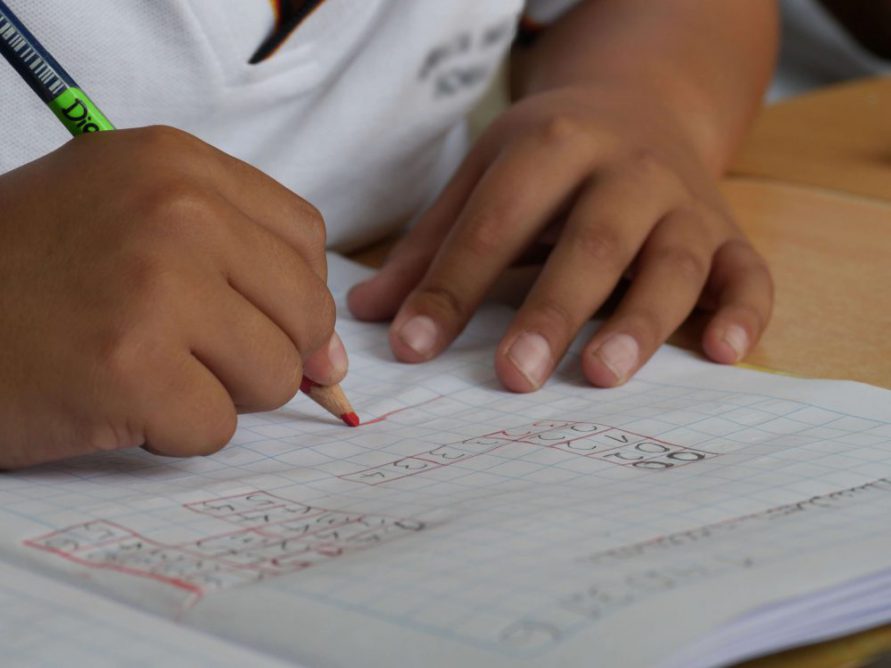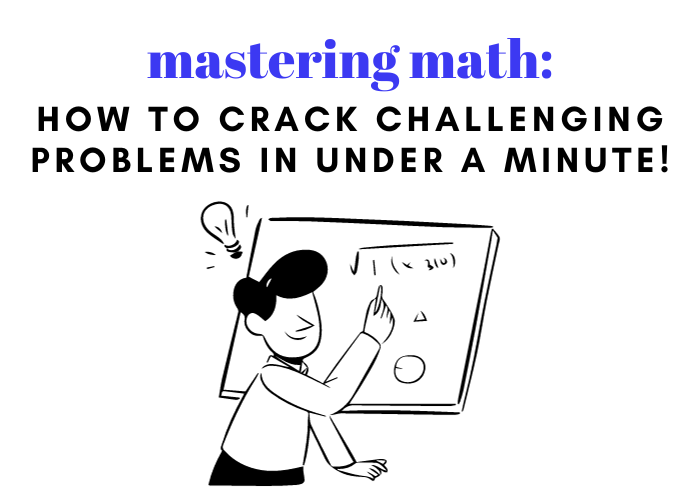

Last Updated on August 31, 2021
Are you a busy parent juggling a full-time job and a jam-packed schedule?
When it comes time for math homework, do you find yourself exhausted and unable to give your child the dedicated help you know they need?
If you answered “yes” to these questions, you’re not alone.
80% of households have at least one working parent, which means most of us already have enough on our plates without adding mathematics to our schedule.
But the fact is, your child still needs to get their math homework done, despite how busy you are.
So what if there was a way to give your child the help he or she needs without pulling a bunch of all-nighters or spending too much of your time each afternoon?
Luckily, that’s exactly what we’ll be exploring today.
We’ll dive into 4 proven tactics that will help you shorten math homework time while still giving your child the tools they need to get (and stay!) ahead.
A few of these tactics will help you shave time off your child’s math homework load instantly; others require an initial time investment on your part.
When you combine all 4 methods, your child will be able to spend less time on their math homework and have more time to practice additional problems on their own.
Let’s get started with the first tactic on today’s list. Though it’s one that does require an initial investment of time, it’s one that will certainly pay off in both the short and long run.
Here in the United States, children are taught a curriculum that’s centered around and prepares them for specific tests.
Most of their homework and practice problems are similar to what they will see on the actual tests themselves.
But this method of teaching only prepares students for the types of questions they’re going to find on those specific tests. It doesn’t give your child the skills and tools they need to work their way through an answer for questions outside of that test.
You may have seen this in action when your child gets stuck on a math problem at home.
When they try to apply the same formula and memorization techniques they learned to solve one problem, they are unable to find a solution for a different one.
This is what drags out homework time and makes what should be a quick task last a few hours.
This doesn’t have to be the case.
A Singapore based method ensures your child can tackle any problem they’re faced with.
Using this way of teaching, children learn, understand, and master a specific series of concepts each year. By doing this, they’re able to work their way through any problem logically and sequentially.
This means you’ll eventually spend less time on homework since your child will have the tools they need to tackle their homework — and any additional math practice — all on their own.
If you’re not familiar with the Singapore Math method, consider this is your first introduction. After all, you’ll need a firm grasp of how the method works yourself so you can help your child understand it and work their way through it.
But what if you don’t have time to learn a new teaching method?
If that’s the case, you’ll want to call in an expert (more on this next). Otherwise, you’ll be spending even more time that you don’t have.
For parents in-the-know about the Singapore Math method, it’s essential that you find a service that can teach your child this method first and then keep encouraging your child to practice and sharpen their skills.
Since this method is not taught or emphasized here in the states, you’ll need to hold your child accountable.
Finding a resource to access this method will require some additional work up front on your end, but once you get your child to master this method, homework time will be a breeze. And that will free up time for them to practice additional math problems.
This next tip can help whether you’re penciling in math homework time on your own or barely have time to read a word problem.
Homework Item: Start practicing the Singapore method with your child or find an expert who can help instead.
The Thinkster’s Singapore based method can help your child work through math problems like a pro, but that’s only if they have a tight grasp on the concepts.
If you’re limited on time or experience with this method, this can be difficult to teach.
To combat this, find a math tutor who is well-versed in this method so they can lay the important foundational groundwork your child needs to build on.
For parents especially short on time, you’re better off reaching out to an online math tutor so you’re not stressed.
Follow this route and you’ll cut out time-consuming commutes to and from a tutoring facility and your child can focus on learning right from the comfort of your own home (or wherever is best for them).
This is another way to save time while still giving your child the extra math help they need to get or stay at the top of their class.
Homework Item: Find a qualified online math tutor instead of trying to tackle this important area on your own.
The next tip on my list will also help you and your child do just that.
It’s no surprise that practicing math problems will help your child perform better at them. They’ll become so confident they’ll start spending less time tackling each one.
But, to get that point, they need additional math problems to practice when their homework is completed. This is a common area many parents struggle with.

Often times, your local bookstore or even the additional resources sent home from your child’s teachers are simply not enough.
For one, they reiterate the same problems over and over, using the same memorization tactics that only apply to that one type of problem. That won’t help your child master math or any other problems thrown their way.
On top of that, many math worksheets are generalized and focus on concepts that your child may already have a firm grasp on.
That’s why there’s a better solution: using a math tutoring app that also comes with a math tutor to personalize your child’s experience.
With this, you’ll have access to additional math worksheets and extra problems to practice. Each one will be tailored to both your child’s grade level as well as their skill level.
If they’ve already mastered 5th grade math, they can jump ahead to 6th grade concepts even though they’re still only in 5th grade at school.
This is the perfect way to keep your child practicing math on-the-go since most tutoring apps can be used on any device you or your child is comfortable with.
Tutoring apps like this one also give your child real-time feedback so they’ll know right away if they can move on or should spend additional time on a particular problem area.
By practicing important concepts repeatedly, your child will learn to tackle problems faster and more efficiently. You’ll be able to cut down how much time your child needs to spend completing their homework with you and give them more time to improve on their own.
This winning combo will help them build confidence in their own ability to solve problems when you’re not around.
Homework Item: Start using math worksheets and a math tutoring app with your child so they can not only practice their skills but also to help them get ahead.
Keep in mind, math equations aren’t the only problems your child should practice, as we’ll discuss next.
Math problems are great for helping your child get ahead with math, but there’s also another set of problems they should be tackling simultaneously: word problems.
It’s essential that your child develops the skills they need to work through any problem they’re given to the point of completion.
Word problems can help do that since they develop a child’s critical thinking, analytical, and reasoning skills, as I discussed here.
Instead of using the rigid “rules” that children are taught in school to solve the problem, they must understand the “why” behind the problem and tap into their own logic to work their way through to a solution.
And if this is a skill they have not fully developed yet, your child is going to struggle with tackling both word problems and normal math problems.
You’ll be spending far too much time getting your child through their homework if this happens.
That’s why it’s crucial that your child starts practicing word problems as early and often as possible.
You can find word problems in the math tutoring app I mentioned earlier, but in order for your child to be able to work through these, they should have a good understanding of how to actually tackle word problems first.
Thinkster’s Singapore based method can help here too. But that’s only if you have the time to use it.
If you don’t, you’ll want to hire an expert, as I mentioned earlier, otherwise you’ll be spending double the amount of time just to get your child where they need to be.
Homework Item: Find word problems for your child to practice using a math tutoring app like this one or reach out to an online math tutor to get started.
The tips in today’s article offer you both short term and long term solutions to the all too common problem of how to give your child the math help they need when you don’t have time.
For busy parents working full-time jobs, it’s best to outsource your tutoring to an experienced and qualified online math tutor so you can cut out unnecessary commutes and stop worrying if your house is in tutor-ready condition.
In addition to finding an online tutor, it’s essential that your child learns and keeps practicing a Singapore based math method. This will give them the tools and confidence they need to tackle any problem efficiently and logically.
On top of that, encourage your child to practice both math and word problems regularly to keep their skills fresh. If you need help finding resources to complete this task, check out our math tutoring app.
By tackling these 4 methods, you’ll ensure that your child not only masters their grade level math, but also gets ahead in less time. That definitely makes your initial investment worth it.


